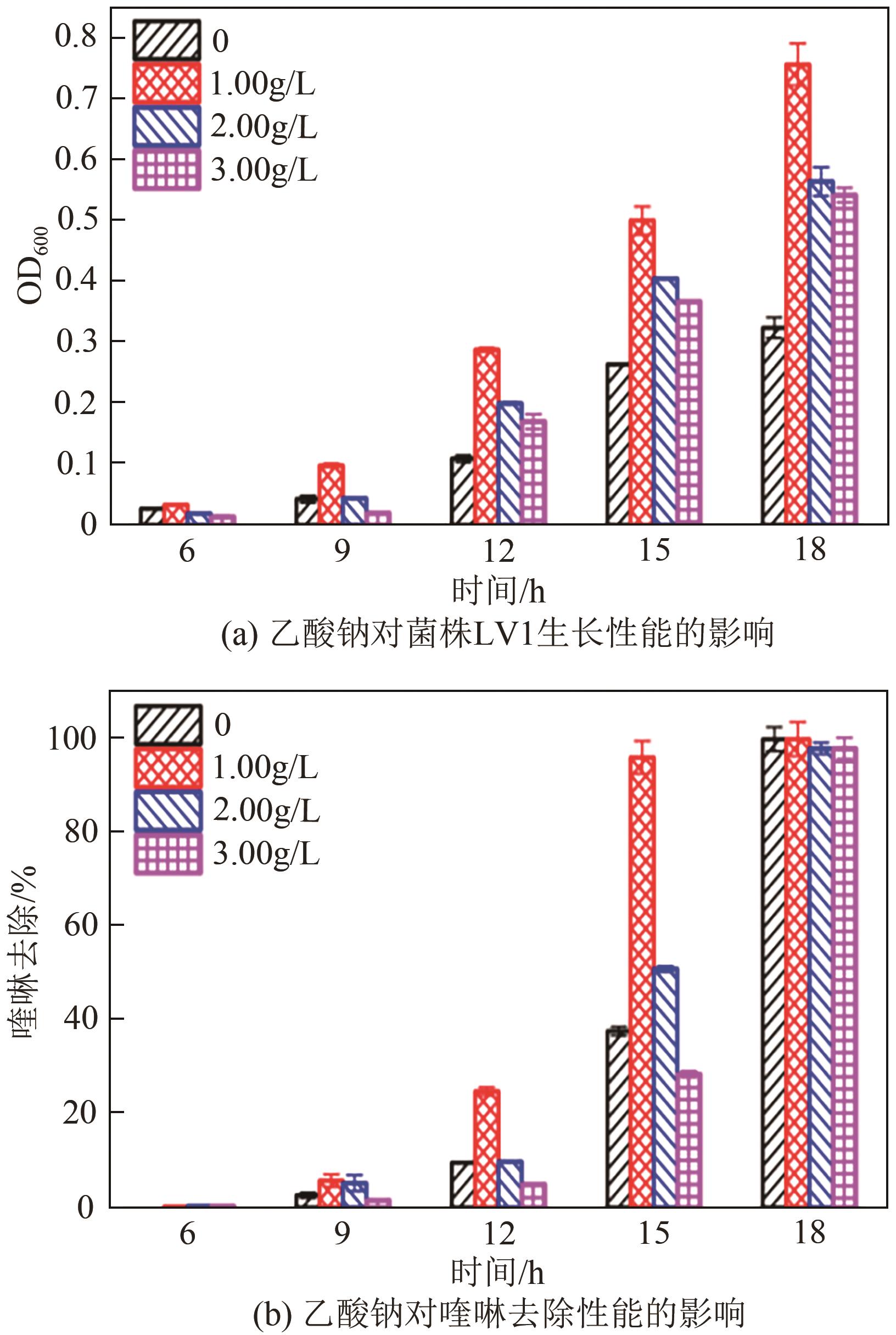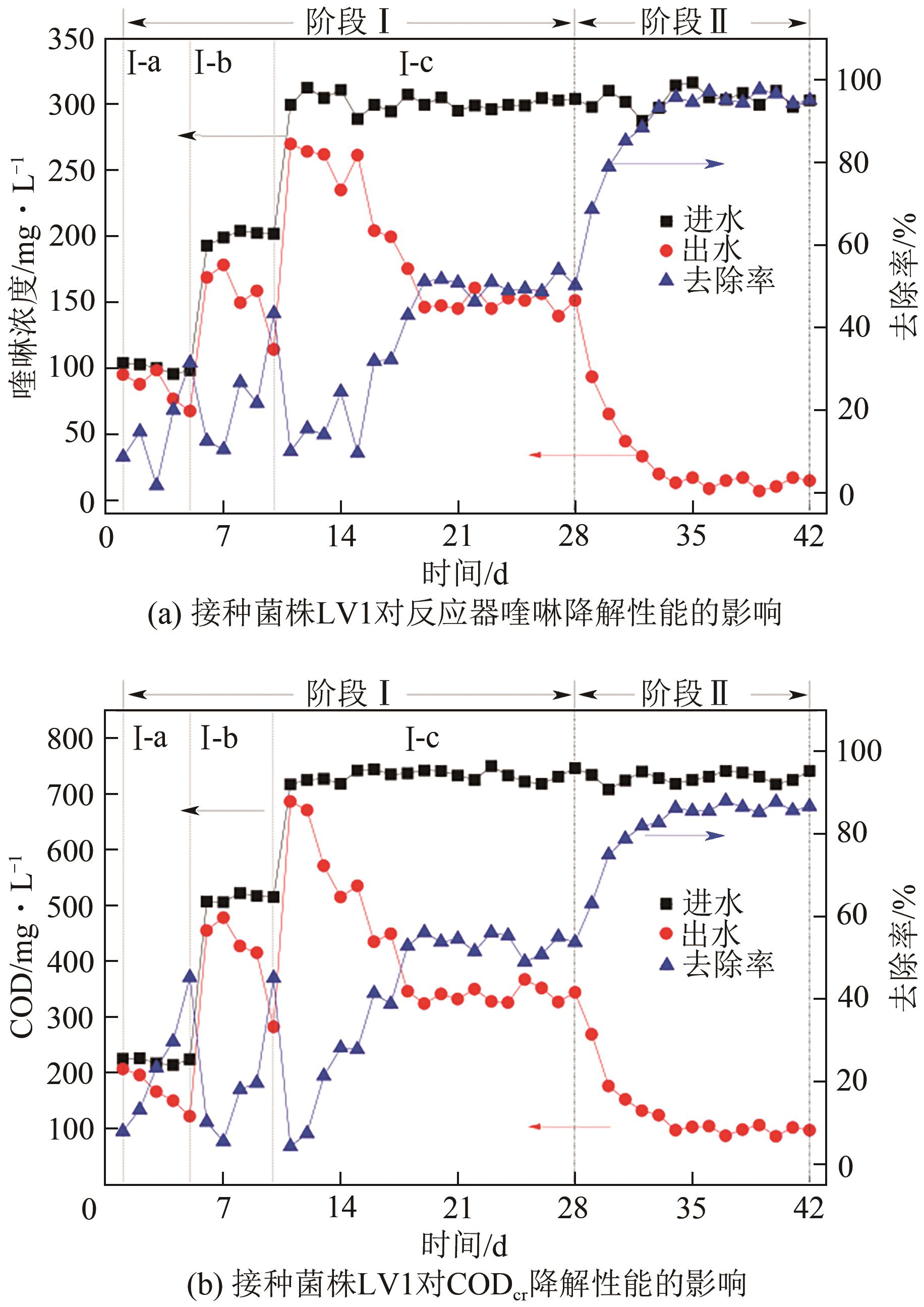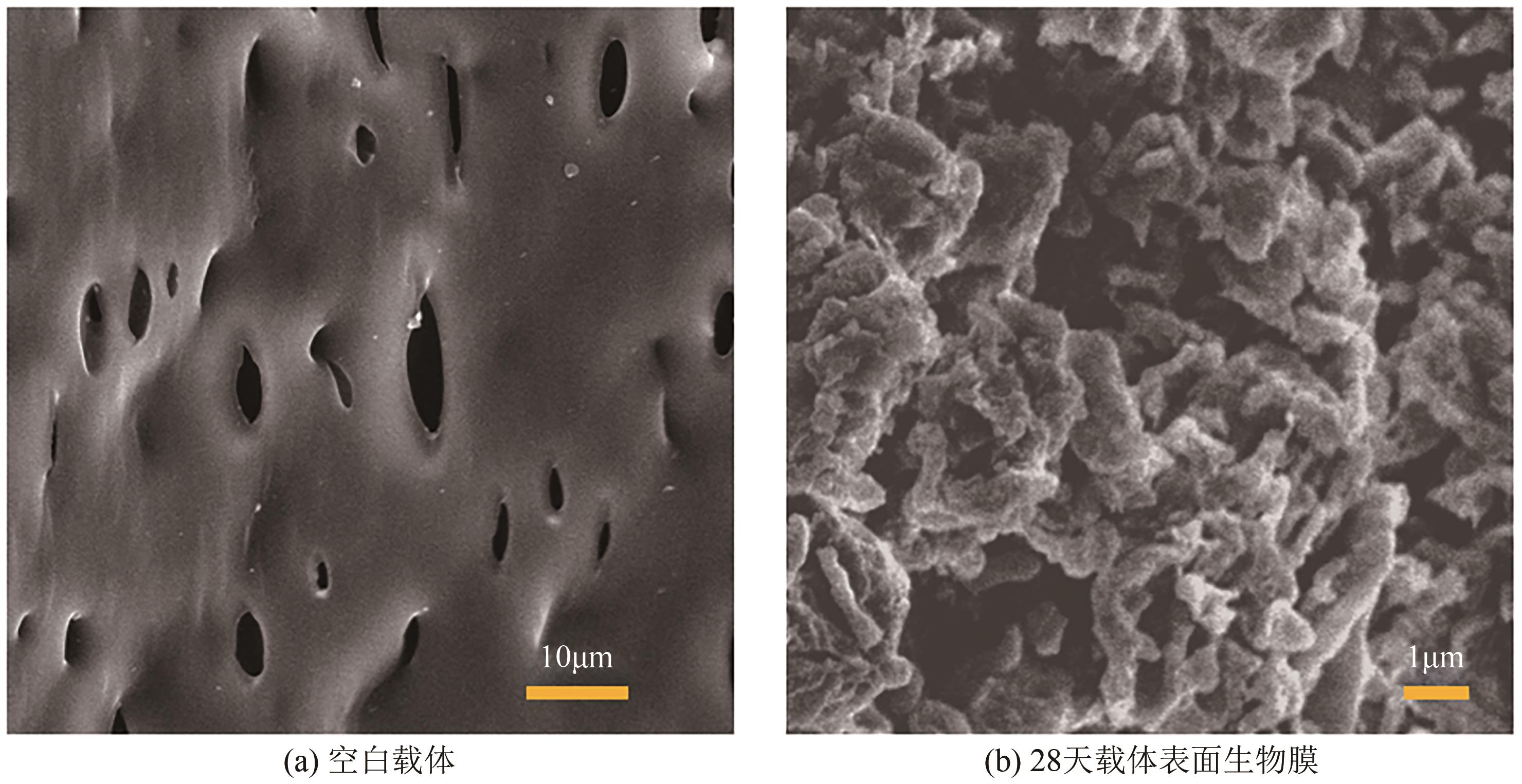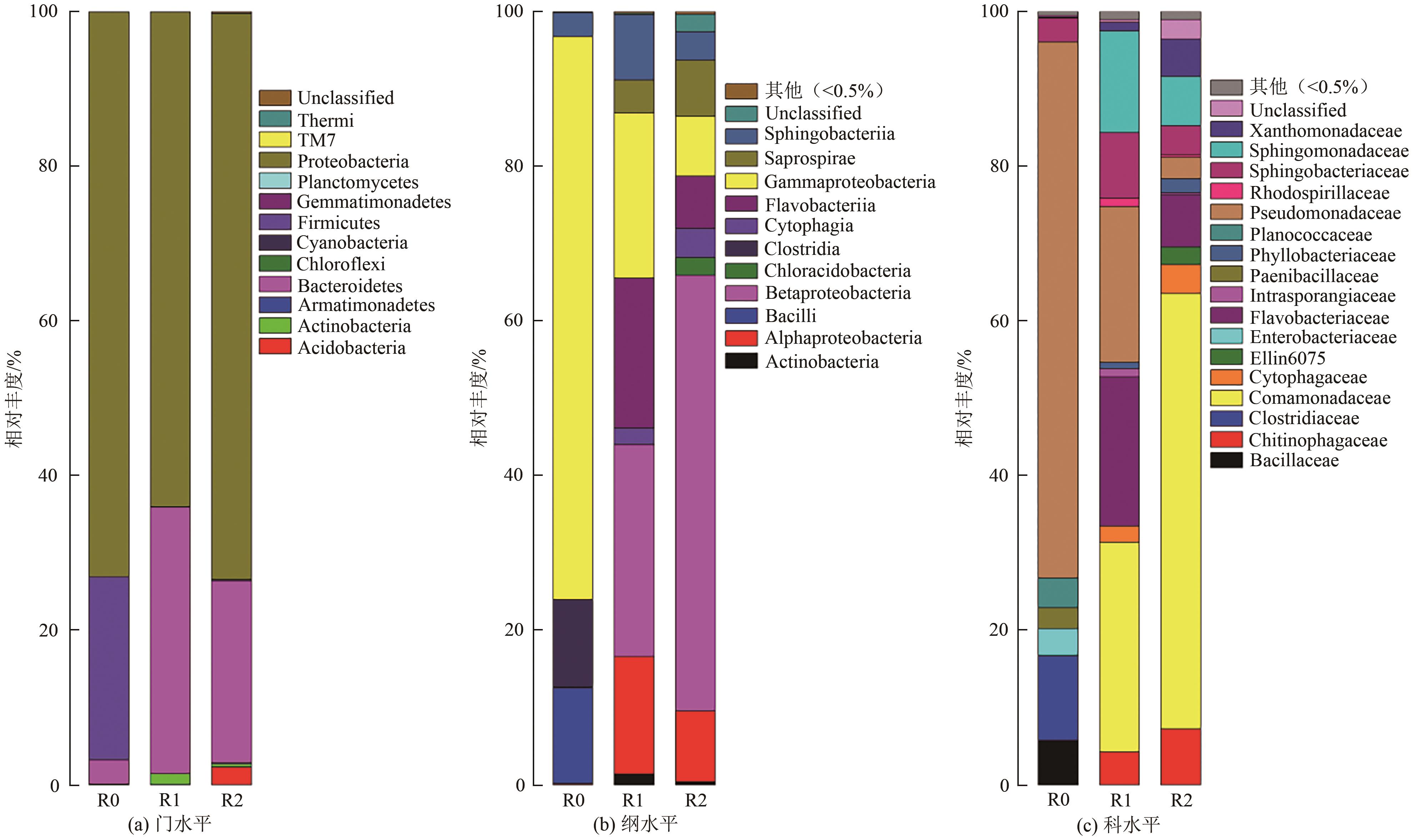| 1 |
PADOLEY K V, MUDLIAR S N, PANDEY R A. Heterocyclic nitrogenous pollutants in the environment and their treatment options—An overview[J]. Bioresource Technology, 2008, 99(10): 4029-4043.
|
| 2 |
HASHEMABADI Davood, TORKASHVAND Ali Mohammadi, KAVIANI Behzad, et al. Effect of Mentha pulegium extract and 8-hydroxy quinoline sulphate to extend the quality and vase life of rose (Rosa hybrid) cut flower[J]. Journal of Environmental Biology, 2015, 36(1): 215-220.
|
| 3 |
WESCHENFELDER S E, JOSÉ H J, GEBHARDT W, et al. Monitoring the physicochemical and chemical treatment of textile wastewater using GC/MS, LC/MS and MS/MS techniques[J]. Separation Science and Technology, 2007, 42(7): 1535-1551.
|
| 4 |
SHI Jingxin, XU Chunyan, HAN Yuxing, et al. Enhanced anaerobic biodegradation efficiency and mechanism of quinoline, pyridine, and indole in coal gasification wastewater[J]. Chemical Engineering Journal, 2019, 361: 1019-1029.
|
| 5 |
BLUM Philipp, SAGNER Anne, TIEHM Andreas, et al. Importance of heterocylic aromatic compounds in monitored natural attenuation for coal tar contaminated aquifers: A review[J]. Journal of Contaminant Hydrology, 2011, 126(3/4): 181-194.
|
| 6 |
NEUWOEHNER Judith, REINEKE Anne-Kirsten, HOLLENDER Juliane, et al. Ecotoxicity of quinoline and hydroxylated derivatives and their occurrence in groundwater of a tar-contaminated field site[J]. Ecotoxicology and Environmental Safety, 2009, 72(3): 819-827.
|
| 7 |
MESTANKOVA Hana, PARKER Austa M, BRAMAZ Nadine, et al. Transformation of contaminant candidate list (CCL3) compounds during ozonation and advanced oxidation processes in drinking water: Assessment of biological effects[J]. Water Research, 2016, 93: 110-120.
|
| 8 |
JIANG Yinhu, ZHANG Fuyin, XU Siqiong, et al. Biodegradation of quinoline by a newly isolated salt-tolerating bacterium Rhodococcus gordoniae strain JH145[J]. Microorganisms, 2022, 10(4): 797.
|
| 9 |
王莹, 徐梦迪, 陈虎, 等. 一株耐盐菌的鉴定及其高盐条件下喹啉降解性能研究[J]. 化学通报, 2023, 86(1): 117-122.
|
|
WANG Ying, XU Mengdi, CHEN Hu, et al. Identification of a salt-tolerant strain and its degradation performance of quinoline under high salinity condition[J]. Chemistry Bulletin, 2023, 86(1): 117-122.
|
| 10 |
LIU Jing, YU Yang, CHANG Ying, et al. Enhancing quinoline and phenol removal by adding Comamonas testosteroni bdq06 in treatment of an accidental dye wastewater[J]. International Biodeterioration & Biodegradation, 2016, 115: 74-82.
|
| 11 |
ZHAO Qiancheng, HU Qiaoyu, QIU Ziliang, et al.Biodegradation characteristics and mechanism of quinoline by Ochrobactrum sp. strain C2[J]. Water Science and Technology, 2022, 86(5): 1284-1298.
|
| 12 |
WANG Puyu, CHEN Hu, WANG Ying, et al. Quinoline biodegradation characteristics of a new quinoline-degrading strain, Pseudomonas citronellolis PY1[J]. Journal of Chemical Technology & Biotechnology, 2020, 95(8): 2171-2179.
|
| 13 |
BAI Yaohui, SUN Qinghua, ZHAO Cui, et al. Quinoline biodegradation and its nitrogen transformation pathway by a Pseudomonas sp. strain[J]. Biodegradation, 2010, 21(3): 335-344.
|
| 14 |
YU Zhongtang, MOHN William W. Bioaugmentation with the resin acid-degrading bacterium Zoogloea resiniphila DhA-35 to counteract pH stress in an aerated lagoon treating pulp and paper mill effluent[J]. Water Research, 2002, 36(11): 2793-2801.
|
| 15 |
SAHA Shaswati, BADHE Neha, Sukdeb PAL, et al. Carbon and nutrient-limiting conditions stimulate biodegradation of low concentration of phenol[J]. Biochemical Engineering Journal, 2017, 126: 40-49.
|
| 16 |
CHEN Hu, WANG Ying, WANG Puyu, et al. Assessing quinoline removal performances of an aerobic continuous moving bed biofilm reactor (MBBR) bioaugmented with Pseudomonas citronellolis LV1[J]. Chinese Journal of Chemical Engineering, 2023, 57: 132-140.
|
| 17 |
XU Hua, SUN Weihua, YAN Ning, et al. Competition for electrons between pyridine and quinoline during their simultaneous biodegradation[J]. Environmental Science and Pollution Research International, 2017, 24(32): 25082-25091.
|
| 18 |
CHEN Hu, WANG Ying, Yongkang Lyu. Simultaneous removal characteristics of ammonium and phenol by Alcaligenes faecalis strain WY-01 with the addition of acetate[J]. Bioprocess and Biosystems Engineering, 2021, 44(1): 27-38.
|
| 19 |
SHI Jingxin, HUANG Weiliang, WAN Ning, et al. Effects of sodium acetate, glucose, and Chlorella powder as carbon source on enhanced treatment of phenolic compounds and NO2 –-N in coal pyrolysis wastewater[J]. Fuel, 2023, 339: 126974.
|
| 20 |
YANG Jixiang, ZHAO Bin, ZHANG Peng, et al. Improvement in nitrogen removal and changes in community structure in a sequencing batch reactor bioaugmented with P. stutzeri strain XL-2[J]. Bioresource Technology, 2020, 317: 123976.
|
| 21 |
BAI Yaohui, SUN Qinghua, SUN Renhua, et al. Bioaugmentation and adsorption treatment of coking wastewater containing pyridine and quinoline using zeolite-biological aerated filters[J]. Environmental Science & Technology, 2011, 45(5): 1940-1948.
|
| 22 |
MA Qiao, QU Yuanyuan, SHEN Wenli, et al. Bacterial community compositions of coking wastewater treatment plants in steel industry revealed by illumina high-throughput sequencing[J]. Bioresource Technology, 2015, 179: 436-443.
|
| 23 |
IBARBALZ Federico M, FIGUEROLA Eva L M, ERIJMAN Leonardo. Industrial activated sludge exhibit unique bacterial community composition at high taxonomic ranks[J]. Water Research, 2013, 47(11): 3854-3864.
|
| 24 |
JIA Shengyong, HAN Hongjun, ZHUANG Haifeng, et al. The pollutants removal and bacterial community dynamics relationship within a full-scale British Gas/Lurgi coal gasification wastewater treatment using a novel system[J]. Bioresource Technology, 2016, 200: 103-110.
|
| 25 |
ZHANG Xuwang, QU Yuanyuan, YOU Shengnan, et al. Bioremediation of nitrogen-containing organic pollutants using phenol-stimulated activated sludge: Performance and microbial community analysis[J]. Journal of Chemical Technology & Biotechnology, 2018, 93(11): 3199-3207.
|
| 26 |
SHI Jingxin, HAN Yuxing, XU Chunyan, et al. Enhanced anaerobic degradation of selected nitrogen heterocyclic compounds with the assistance of carboxymethyl cellulose[J]. Science of the Total Environment, 2019, 689: 781-788.
|
| 27 |
SHI Jingxin, ZHENG Mengqi, ZHANG Zhengwen, et al. Enhanced biodegradation of quinoline and indole with a novel symbiotic system of Polyurethane-chlorella-bacteria[J]. Journal of Water Process Engineering, 2020, 37: 101525.
|
| 28 |
LARSEN Poul, NIELSEN Jeppe Lund, OTZEN Daniel, et al. Amyloid-like adhesins produced by floc-forming and filamentous bacteria in activated sludge[J]. Applied and Environmental Microbiology, 2008, 74(5): 1517-1526.
|
| 29 |
SHI Jingxin, HAN Yuxing, XU Chunyan, et al. Anaerobic bioaugmentation hydrolysis of selected nitrogen heterocyclic compound in coal gasification wastewater[J]. Bioresource Technology, 2019, 278: 223-230.
|
| 30 |
AN Ying, WANG Mengyu, ZHOU Zhen, et al. Enhancing biodegradability of industrial park wastewater by packing carriers and limited aeration in the hydrolysis process[J]. Journal of Cleaner Production, 2020, 264: 121638.
|
| 31 |
洪璇. 杂环芳香化合物降解菌群与降解基因克隆方法研究[D]. 上海:上海交通大学, 2008.
|
|
HONG Xuan. Study on heterocyclic aromatic hydrocarbon degrading bacteria and method of clonging degrading genes[D]. Shanghai: Shanghai Jiao Tong University, 2008.
|
| 32 |
JIANG Bei, DU Cong, SHI Shengnan, et al. Enhanced treatment performance of coking wastewater and reduced membrane fouling using a novel EMBR[J]. Bioresource Technology, 2017, 229: 39-45.
|
| 33 |
JIANG Bei, ZHOU Zunchun, DONG Ying, et al. Biodegradation of benzene, toluene, ethylbenzene, and o-, m-, and p-xylenes by the newly isolated bacterium Comamonas sp. JB[J]. Applied Biochemistry and Biotechnology, 2015, 176(6): 1700-1708.
|
| 34 |
LUO Yanhong, YUE Xiuping, WEI Peng, et al. A state-of-the-art review of quinoline degradation and technical bottlenecks[J]. Science of the Total Environment, 2020, 747: 141136.
|
| 35 |
ZHENG Mengqi, HAN Hongjun, SHI Jingxin, et al. Metagenomic analysis of aromatic ring-cleavage mechanism in nano-Fe3O4@activated coke enhanced bio-system for coal pyrolysis wastewater treatment[J]. Journal of Hazardous Materials, 2021, 414: 125387.
|
| 36 |
JOSHI Dev Raj, ZHANG Yu, ZHANG Hong, et al. Characteristics of microbial community functional structure of a biological coking wastewater treatment system[J]. Journal of Environmental Sciences, 2018, 63: 105-115.
|
| 37 |
JOSHI Dev Raj, ZHANG Yu, GAO Yinxin, et al. Biotransformation of nitrogen- and sulfur-containing pollutants during coking wastewater treatment: Correspondence of performance to microbial community functional structure[J]. Water Research, 2017, 121: 338-348.
|
| 38 |
FOROUHAR Farhad, J L Ross ANDERSON, MOWAT Christopher G, et al. Molecular insights into substrate recognition and catalysis by tryptophan 2,3-dioxygenase[J]. Proceedings of the National Academy of Sciences of the United States of America, 2007, 104(2): 473-478.
|
| 39 |
ZHOU Jin, ZHANG Boya, YU Ke, et al. Functional profiles of phycospheric microorganisms during a marine dinoflagellate bloom[J]. Water Research, 2020, 173: 115554.
|
 ), WANG Ying3(
), WANG Ying3( ), WANG Puyu3, LYU Yongkang1,3,4
), WANG Puyu3, LYU Yongkang1,3,4
 ), 王莹3(
), 王莹3( ), 王璞玉3, 吕永康1,3,4
), 王璞玉3, 吕永康1,3,4




